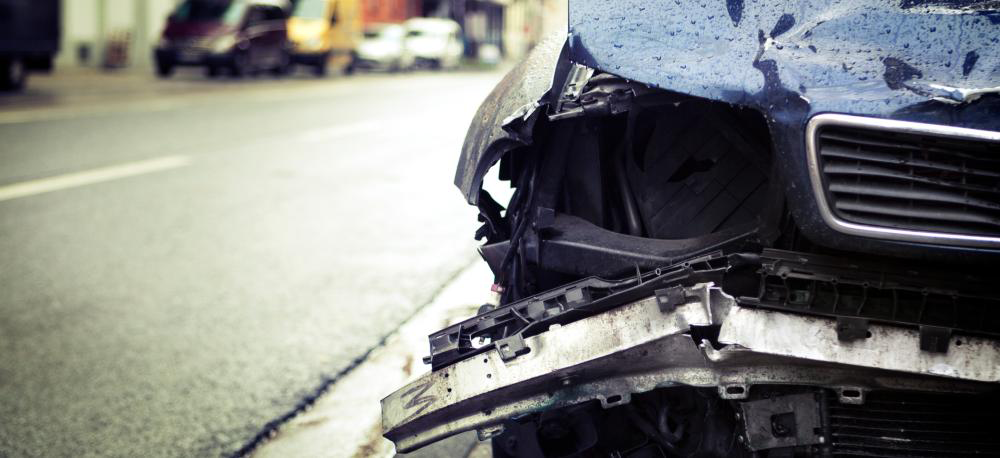Auto collisions can be a stressful experience and what may make the situation even worse is when one party flees the scene, making it a hit-and-run collision.

Unfortunately, hit-and-run collisions occur more frequently than the public realizes. According to the most recent data from the AAA Foundation for Traffic Safety, more than one hit-and-run collision occurs every minute on the roads in the United States. Additionally, there has been an average of 682,000 hit-and-run collisions yearly since 2006.
Hit-and-run collisions add a different element, and knowing how to handle such a situation can be tricky. Keep reading to find out how to handle a hit-and-run collision properly. We'll also discuss some important things to avoid doing after this type of collision.
What Is Considered a Hit-And-Run?
A hit-and-run is when the driver of a vehicle is involved in a collision with a separate vehicle, property, or human being. And they knowingly fail to stop to provide adequate assistance and information to the other parties involved.
While each state may have a variation on its legal definition of a hit-and-run, in most states, it is illegal to flee the scene of a collision (no matter who is at fault). Furthermore, hit-and-run penalties may vary from state to state. And depending on the severity of the situation, a felony or misdemeanor may be issued.
Suppose the individual who fled the scene cannot be identified. In that case, the present individual may be responsible for covering all damage expenses resulting from the collision. Depending on the auto policy, some expenses may be covered by the insurer.
What to Do After a Hit-And-Run?
The steps to follow after a hit-and-run accident are similar to those of a regular collision. However, due to the nature of the collision, gathering specific information may be more difficult. Since every second counts following a hit-and-run collision, adhere to the following steps.
Check for injuries
First and foremost, you should check yourself and any other passengers in the vehicle for injuries. Due to the body's shock value during a collision, it may take some time to recognize visible and nonvisible injuries. If any noticeable injuries occurred during the collision, it's recommended to contact 911.
The safety of the driver and the passengers should supersede anything else. Suppose the vehicle is not in a safe location following the collision. Moving to a secure location is important when and if possible. Make sure there is no oncoming traffic, and lastly, try to move the vehicle where it won't be in danger of another collision.
Gather all important information
While it may be more difficult to gather adequate information from a hit-and-run collision, getting as much information as possible is imperative. The information gathered may help the authorities locate the missing driver, which may help with collision expenses. If possible, some of the key information to gather includes:
- License plate number
- The make, model, and color of the car
- Approximate year of car
- Description of any damage to the other vehicle
- Photos of the damage to your vehicle and the other car
- Which direction the fleeing vehicle was headed
- Approximate location, date, and time of the collision
Documentation of the items listed above is important because your short-term memory may forget key details, especially after an event such as a collision.
Report it to the appropriate authorities
Once it's determined that the driver and the passengers are safe, it is important to contact the police immediately. While on the phone with the police dispatcher, it's important to remain calm and accurately relay pertinent information. Some information they may need includes the exact location of the collision, the direction the fleeing driver was headed, and any potential witnesses' names. Try to gather as much supplemental information as possible from the witnesses.
When the authorities arrive on the scene, they will file a police report. It's recommended to ask for a copy because the insurance company may require official documentation before filing a claim.
Contact your insurance company
Once the police have wrapped up their report, and you're safe to leave the scene, the next important step is to contact your insurance provider. Doing that as soon as possible is recommended so all the details remain fresh in your memory.
The insurance company will begin the claims process. Perks such as towing and finding a rental car may be available depending on your coverage. If the identity of the fleeing driver is located and they are insured, it's possible to gather their insurance information from the insurance company. They may file a claim with the other driver's insurance provider.
What Not to Do After a Hit-And-Run?
Like a regular collision, there are important things you should not do after a hit-and-run collision. Some of those include:
- Following the fleeing driver: One of the biggest mistakes anyone can make following a hit-and-run collision is to chase after the other driver. You may miss out on important details from witnesses, the police may not know who is at fault, and most importantly, you may risk getting into another collision.
- Wait to report it to the appropriate authorities: Waiting to contact the police may hinder your chances of identifying the fleeing driver. As mentioned, the longer you wait to contact the police, the greater odds you may forget important details.
Contact Gerber Collision to Help Repair Damages After a Hit-And-Run
Hit-and-run collisions may often be difficult to navigate. Remaining calm and gathering important details are some of the best ways to get through that unfortunate situation.
If your car suffered any damage from a hit-and-run collision, our wonderful technicians at Gerber Collision are happy to help. We offer windshield replacement and repair, auto body repair, hail damage repair, and paintless dent repair. Contact Gerber Collision at 1-877-743-7237 or schedule an appointment through our online portal.






